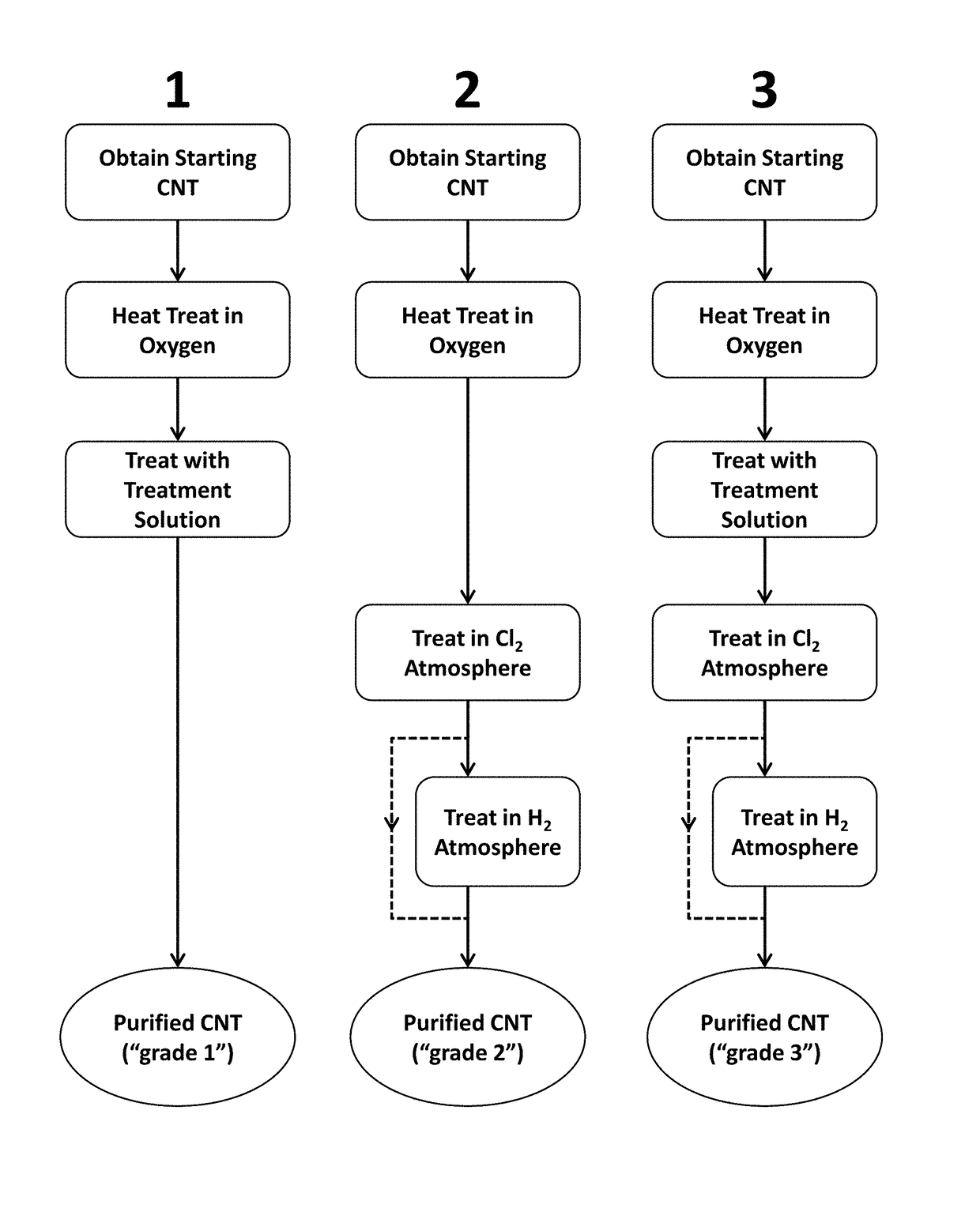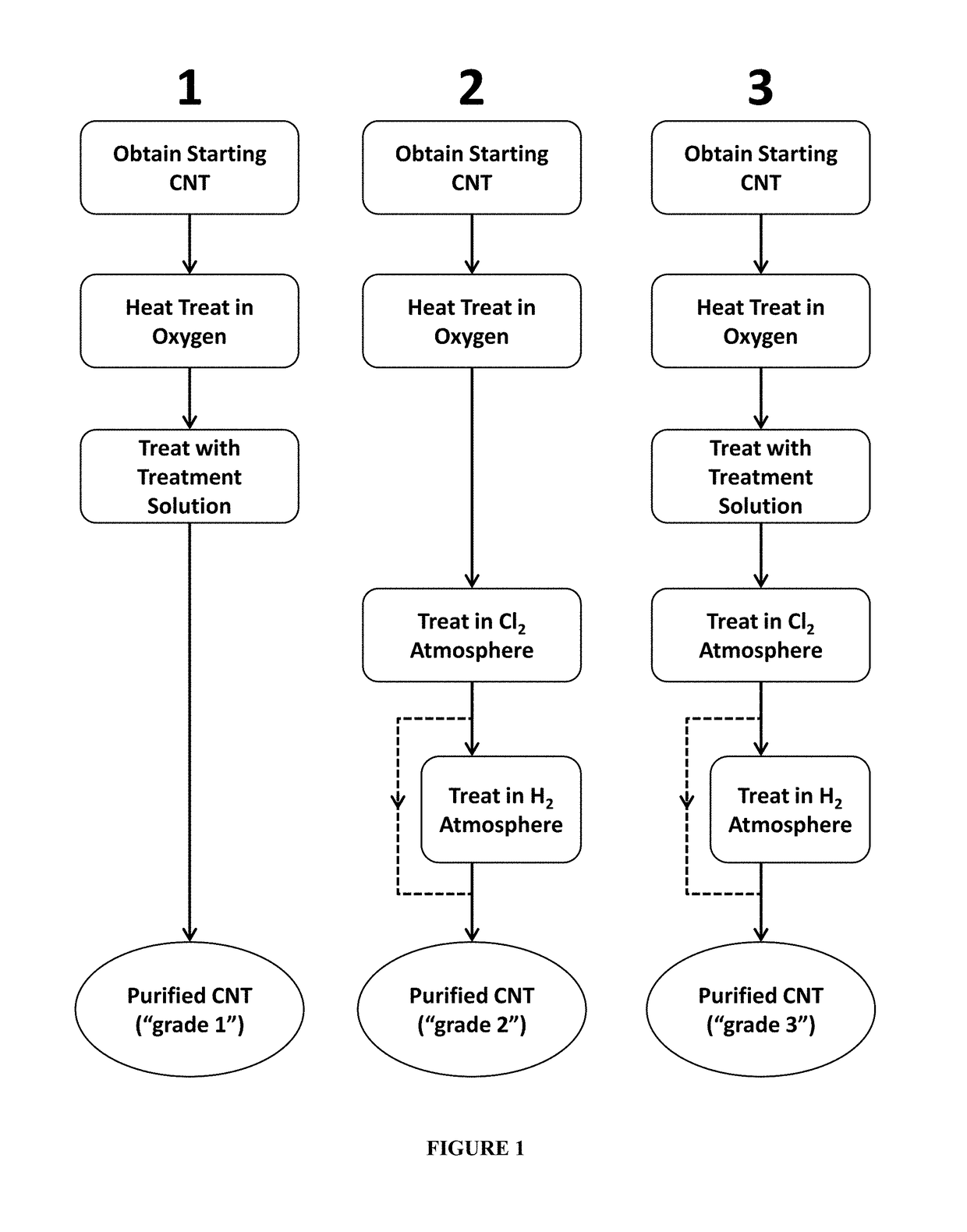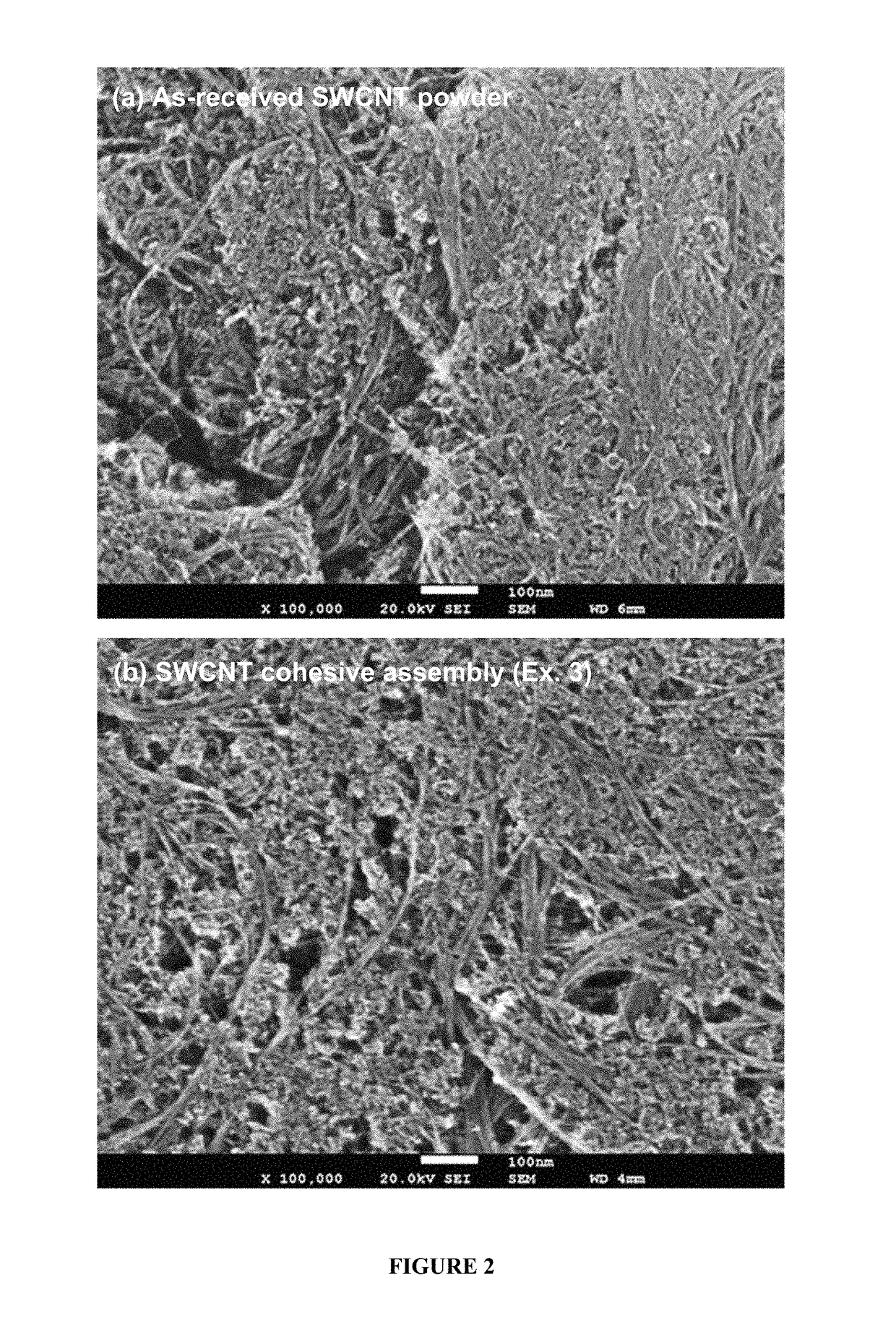Highly purified carbon nanotubes and method of their preparation
a carbon nanotube, high-purification technology, applied in the direction of carbon nanotubes, nano-carbon, etc., can solve the problems of reducing the raman g/d ratio, affecting the electrical, thermal and mechanical properties of the material, and generating amorphous carbon and inorganic impurities in the cnt material, etc., to achieve high purity and high raman g/d ratio
- Summary
- Abstract
- Description
- Claims
- Application Information
AI Technical Summary
Benefits of technology
Problems solved by technology
Method used
Image
Examples
example 1
on of a Treatment Solution “AAA-1”
[0092]First, 240 grams de-ionized water are combined in a flask with 160 grams reagent alcohol (Catalog number A995-4, Thermo Fisher Scientific, Waltham Mass.). Then, 100 grams of hydrochloric acid (HCl, 35-38%) (Catalog number A508-500, Thermo Fisher Scientific) are slowly added to the flask. The contents of the flask are mixed thoroughly to form a uniform solution. The concentration of HCl in this solution is about 1.9N. This solution is identified as “AAA-1”.
example 2
on of a Treatment Solution “AAA-2”
[0093]First, 270 grams de-ionized water are combined in a flask with 180 grams reagent alcohol. Then, 300 grams of hydrochloric acid (HCl, 35-38%) are slowly added to the flask. Lastly, 7.5 grams of hydrofluoric acid (HF, 47-51%) (Catalog number A513-500, Thermo Fisher Scientific) are slowly added to the flask. The contents of the flask are mixed thoroughly to form a uniform solution. The concentrations of HCl and HF in this solution are about 4.0N and 0.25N, respectively. This solution is identified as “AAA-2”.
example 3
on of Single Wall Carbon Nanotube (SWCNT) Wafers
[0094]Cohesive carbon nanotube assemblies (“wafers”) are prepared according to a method described in detail in WIPO publication WO 2012 / 177555A2. Single wall carbon nanotube (SWCNT) powder is obtained from Thomas Swan and Co., Ltd (Consett, County Durham, United Kingdom), under the product name “Elicarb® SW”. The as-received SWCNT powder is examined using a scanning electron microscope (SEM) (model JSM-7500F, JEOL Ltd, Tokyo) at up to 300,000× magnification. The material appears as randomly oriented tubes and bundles with considerable portion of non-tubular amorphous carbon, as seen in FIG. 2(a).
[0095]In a flask 2.5 grams of this SWCNT powder are combined with 1250 ml toluene (Catalog number T324-4, Thermo Fisher Scientific). A uniform dispersion of the SWCNT in the toluene is prepared through a combination of mechanical agitation and sonication. The uniform dispersion of SWCNT in toluene is then cast equally into 24 individual 9-cm di...
PUM
| Property | Measurement | Unit |
|---|---|---|
| thickness | aaaaa | aaaaa |
| temperature | aaaaa | aaaaa |
| temperature | aaaaa | aaaaa |
Abstract
Description
Claims
Application Information
 Login to View More
Login to View More - R&D
- Intellectual Property
- Life Sciences
- Materials
- Tech Scout
- Unparalleled Data Quality
- Higher Quality Content
- 60% Fewer Hallucinations
Browse by: Latest US Patents, China's latest patents, Technical Efficacy Thesaurus, Application Domain, Technology Topic, Popular Technical Reports.
© 2025 PatSnap. All rights reserved.Legal|Privacy policy|Modern Slavery Act Transparency Statement|Sitemap|About US| Contact US: help@patsnap.com



